
This week, we provide you with another in the rotating series of The Shadow two-minute mysteries. Don’t hold me to the two-minute part… but it’s close. That’s how long it will take to read. Solving the mystery may, however, take more than two minutes. Examine the clues; test your sleuthing skills.
This mini-mystery originally appeared on my Shadow in Review website a dozen years ago. The one presented here today was one of those. Perhaps you’ll remember it, and remember the solution, as well. And perhaps not…
This mystery is based upon the original 1930s pulp character, The Shadow. Not the radio version. No clouding men’s minds, here. Just a black cloak and slouch hat.
The solution, at least the one that author had in mind, will appear (below) next Friday. That gives you time to mull over the crime.
Feel free to leave your solution in the comments section below. It may be better than mine! Some of you are mighty clever.
Finally, there are some background notes at the end of the story. They’ll explain a bit more about the movie roots of this story.
You are about to enter the pulp world of the 1930s. Join The Shadow as he dons his black cloak, slouch hat, and gloves, and prepares to battle crime. It’s time for action and mystery. The Shadow knows!
Audio PlayerDeath in the Blue Room
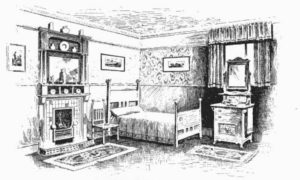
The sound of a gunshot echoed through the silence of the upstairs. Doors were flung open as sleepers rushed out of their bedrooms, throwing on housecoats and bathrobes as they came.
“It came from the Blue Room,” one voice frantically screamed.
Inside the Blue Room lay the dead body of Frank Baldrich. It sprawled upon the large poster bed, a pistol in the right hand, a single gunshot wound to the temple. Death had struck. Death in the Blue Room.
“Walk this way, sir.” Edwards, the butler, led Lamont Cranston into the candlelit study.
Young Nan Kirkland jumped up as he entered the room. “Oh, Lamont, I’m glad you came. I need your help.”
A stout man wearing spectacles introduced himself. “Good evening. I’m Dr. Carroll, a family friend.”
The three sat down by the fireplace. The flickering light cast Cranston’s hawklike shadow oddly upon the floor. “What seems to be the problem?” he asked.
“This house is supposed to be haunted,” Nan began. “Upstairs is a room; we call it the Blue Room. Twenty years ago my father was found dead there.”
“How did he die?” asked Cranston. “Do you know?”
The young woman shook her head. “We were never able to find out. The police finally called it suicide and the room hasn’t been opened since.”
“Nobody’s lived here all these years?”
“Nobody. Not until my stepfather persuaded Mother to move back. We reopened the house yesterday. And then last night… another death.”
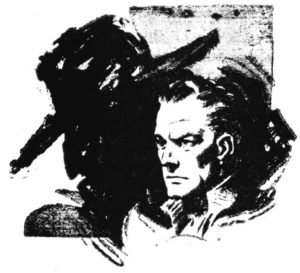
“In the Blue Room?” asked Cranston.
Nan nodded as Dr. Carroll explained. “Frank was staying in the Blue Room. He was going to prove fears of the Blue Room were ungrounded. But in the middle of the night we were awakened by a gunshot. Inside the Blue Room, Frank lay dead; this was beside him.”
Dr. Carroll handed Cranston a typewritten note. Typed in bold, dark capitals was: “…THE TRUTH ABOUT THE BLUE ROOM… NO ONE MUST EVER KNOW.” It was signed “Frank Baldrich.”
“Is there a typewriter in the Blue Room?” Cranston asked.
“Yes,” Nan admitted, “in the writing desk.”
“Is this Baldrich’s signature?”
“I think so.” Nan examined it carefully.
“It certainly looks like it to me,” Dr. Carroll added.
“What about the death weapon?”
Dr. Carroll handed him a small .32 caliber pistol, explaining, “It’s been checked for fingerprints. Frank’s were the only ones on it.”
“Could someone have entered through the bedroom window?”
Dr. Carroll shook his head. “No, it overlooks the cliffs and the ocean down below.”
Cranston set down the pistol. “We’ll go up and look around. But I can tell you…” His eyes burned in the dim light, his usually-calm voice turned hard. “This was no suicide. It was murder!”
HOW DOES THE SHADOW KNOW?
■ ■ ■
[learn_more caption=”Click here for the solution.”]Any inked ribbon sitting unused in a typewriter for twenty years would have dried out, and could not have produced bold, dark type. The murderer must have typed the note elsewhere and brought it with him to the scene of the crime. The Shadow knows!
[/learn_more]■ ■ ■
Background Notes:
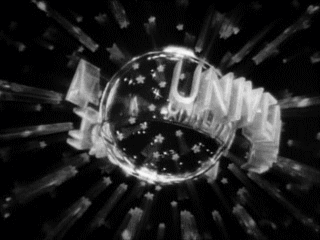
This mini-mystery is an homage to the classic 1944 Universal film Murder in the Blue Room. Although rarely seen today, it was one of the most enjoyable B-movies to come from Universal Studios during the peak of its “horror cycle.” It was a unique combination of horror, comedy and music. But strangely enough, it worked!
In the movie, as in this mini-mystery, there had been a mysterious death 20 years ago in the “Blue Room.” A rash skeptic decided to challenge the spirits and spend the night in that fateful room. And he turned up missing the next morning! That’s where this story parts ways with the original film. Here, young Nan Kirkland, a character in the original movie, calls upon Lamont Cranston for help.
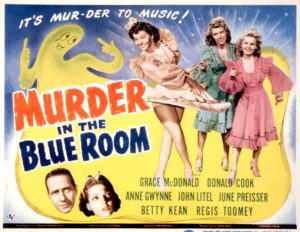
Other than Cranston, all of the characters in this mini-mystery were in the original film. Nan Kirkland was the young society heroine, Doctor Carroll was the family physician, Frank Baldrich was the unfortunate victim, and Edwards was the old butler.
Special note should be taken of the famous line in this story that has been spoken by oh-so-many film butlers, “Walk this way, sir.” It’s been poked fun at by many film spoofs, where the butler has a strange walk, and the visitors take him literally and try to imitate the butler’s gait. William Powell in After The Thin Man (1936) and Gene Wilder’s Young Frankenstein (1974) were just several in a long line of films that tickled viewers’ sense of humor with their take on that line. So although it was used in a serious vein in this current story, it was done with a sly wink of the eye.
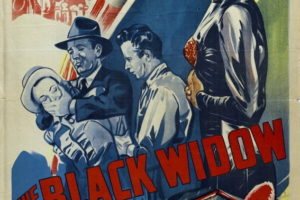
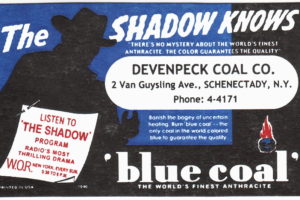
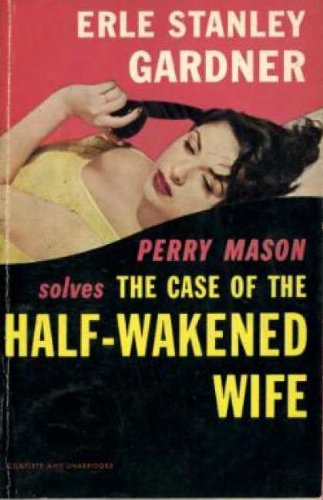
This is the first time I’ve seen a moving image on Pulp.Net! And it’s the classic 1940s Universal logo! By the way, I looked up “Blue Room” on Imdb.com and found it was co-written by none other than I.A.L. Diamond, who was Billy Wilder’s second collaborator, working on such later Wilder films as “The Front Page” and “The Private Life of Sherlock Holmes”.
As a young teen in the 1960s, I can’t tell you how many times I saw that logo on TV. They showed tons of classic Universal horror films. I think that’s what got me hooked on Dracula and Frankenstein and the Mummy and Wolfman. Plus lots of lesser known standalone films like “Horror Island.” And, of course, “Murder in the Blue Room.”
Happily, Universal officially released “Horror Island” on DVD. Sadly, “Murder in the Blue Room” has never received an official release, and only poor quality bootlegs are available.